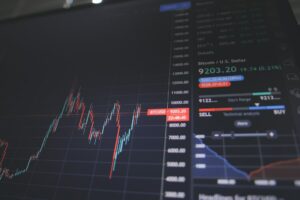Managing Risk in Forex Trading: An Expert’s Advice
Forex trading is a highly lucrative market where fortunes can be made in an instant. However, it is important to remember that with great opportunities come great risks. Without proper risk management, even the most successful traders can quickly find themselves on the losing side of the trade. In this article, we will explore some expert advice on managing risk in forex trading.
1. Understand the Risks
Before diving into the world of forex trading, it is crucial to understand the risks involved. Forex trading is a highly volatile market that is constantly affected by various economic, political, and social factors. Currencies can fluctuate dramatically, and unexpected events can disrupt the market. By having a clear understanding of the risks, traders can make more informed decisions and develop effective risk management strategies.
2. Use Stop Loss Orders
A stop loss order is an essential tool in forex trading. It allows traders to set a predetermined level at which their position will be automatically closed, limiting the potential losses. By setting a stop loss order, traders can protect themselves from significant losses in case the market moves against their position. It is important to determine the appropriate stop loss level based on the individual trading strategy and risk tolerance.
3. Diversify Your Portfolio
Diversification is a key risk management technique that involves spreading investments across different currency pairs. By diversifying the portfolio, traders can reduce the overall risk exposure. If one currency pair performs poorly, the losses can be offset by gains in other pairs. Diversification also allows traders to take advantage of various market opportunities and reduces the reliance on a single trade for profitability.
4. Use Proper Position Sizing
Position sizing refers to determining the appropriate amount of capital to allocate to each trade. It is crucial to avoid risking too much on a single trade, as a significant loss can wipe out the entire trading account. Expert traders often recommend risking only a small percentage of the trading capital, typically around 1-2%. This conservative approach ensures that even a series of losing trades will not have a devastating impact on the trader’s account balance.
5. Keep Emotions in Check
Emotions can be a trader’s worst enemy when it comes to risk management. Greed and fear can cloud judgment and lead to impulsive decision-making. It is important to develop a disciplined approach to trading and stick to a well-defined trading plan. By following a set of predefined rules and strategies, traders can avoid making emotional decisions and stay focused on managing risk effectively.
6. Stay Informed
Staying informed about market trends, news, and economic indicators is crucial for effective risk management in forex trading. By keeping a close eye on global events and economic data releases, traders can anticipate potential market movements and adjust their positions accordingly. Ignoring or overlooking important information can lead to unexpected losses and missed opportunities.
7. Use Risk-Reward Ratio
The risk-reward ratio is a tool that helps traders assess the potential profit versus the potential loss for each trade. It is recommended to have a risk-reward ratio of at least 1:2, meaning that the potential profit should be at least twice the potential loss. By maintaining a positive risk-reward ratio, traders can ensure that winning trades outweigh losing trades in the long run, even if they have more losing trades than winning ones.
In conclusion, managing risk is an essential aspect of successful forex trading. By understanding the risks, using stop loss orders, diversifying the portfolio, employing proper position sizing, keeping emotions in check, staying informed, and using risk-reward ratios, traders can significantly reduce the potential losses and increase their chances of long-term profitability. It is important to remember that risk management is an ongoing process and should be continuously evaluated and adjusted as market conditions change.






